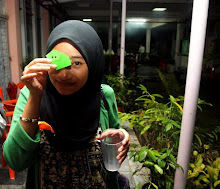Operating systems
20 core functions of an operating systems:
: 1 : To handle the details of the operation of the hardware. This can help application program in managing the details and easier in the process of writing an application.
: 2 : Operating systems software functions as a mediator and intermediary between the user and a computer. Its like an interface between the computer and the outside world.
: 3 : Operating systems software acts as a mediator and intermediary between the user and the computer. It is a set of functions which programs may use to perform specific tasks, relating in interfacing with the components of a computer systems.
: 4 : It also provides the function to monitor computer performance, debug problems, or maintain parts of the systems. This can be done by the applications provided such as disk check, and debugger.
: 5 : One of the basic tasks of an operating system is directing and distributing the limited memory of a computer to the different processes that requires completion. Since the memory is limited, operating system needs to choose which process need to be completed first.
: 6 : Help in data flow between many computers in large organizations and make it possible to connect between computers and the related computer devices.
: 7 : It is also the responsiblity of an operating systems to manage files and folders of information in a computer systems. This means it also maintaining the file systems.
: 8 : Provides supports to load and execute other software or programs.
: 9 : Supervise the computer's resources, such as the central processing unit, memory, disk drives, and printers.
: 10 : Execute and provide services for applications software. However, this task usually is hidden from the user.
: 11 : Carried out all input and output operations done by user or by the application software,such as an antivirus programs.
: 12 : Enable virtual memory operations for application programs, this allows flexible use of memory and enforces security.
: 13 : The operating system directs the traffic inside the computer, deciding what resources will be used and for how long.
: 14 : To hide details of hardware by creating abstraction. An abstraction is software that hides lower level details and provides a set of higher-level functions. An operating system transforms the physical world of devices, instructions, memory, and time into virtual world that is the result of abstractions built by the operating system.
: 15 : Provide a pleasant and effective user interface. The user interacts with the operating systems through the user interface.
: 16 : Offer the facilities for data compression, organizing and stocking libraries.
: 17 : Control and command programs, with a coordinating role and control all the operating system's functions, like execution's interruptions and hardware-user communication.
: 18 : Allocation table for program execution. This happens by identifying the programs to be executed, the needed amount of memory, the preferred devices, and the concerning requests.
: 19 : Helps programmers and users interact with a computer to carry out their intended tasks.
: 20 : When a computer is turned on, the operating system boot up and load the memory.
Monday, August 4, 2008
Subscribe to:
Comments (Atom)




